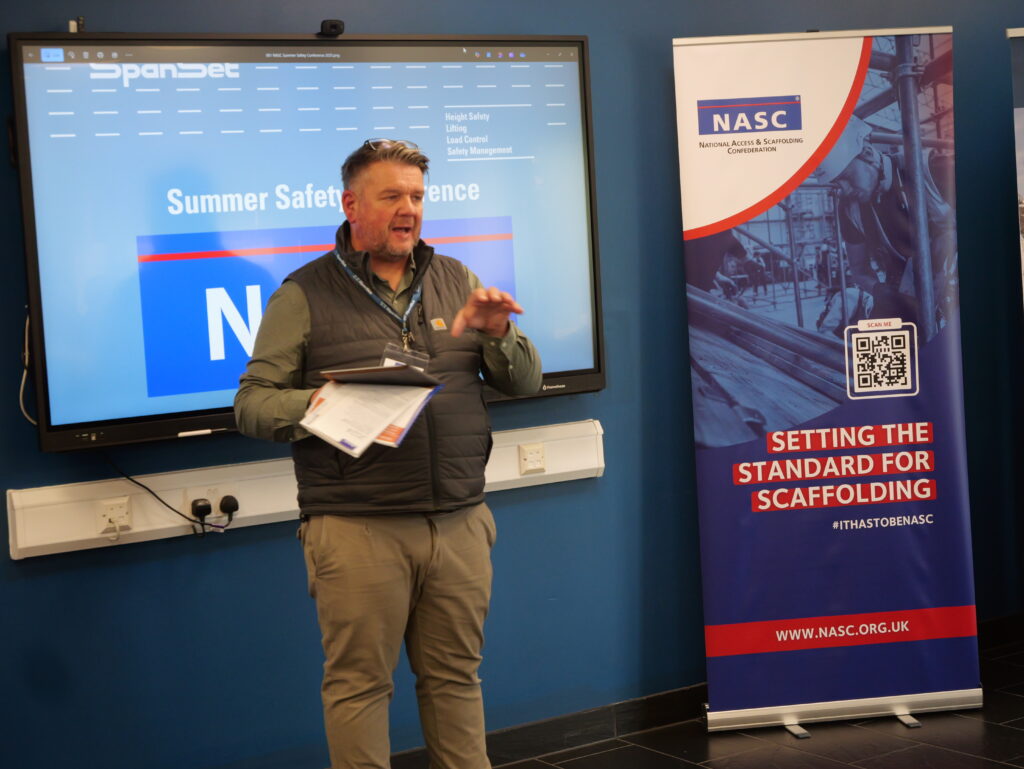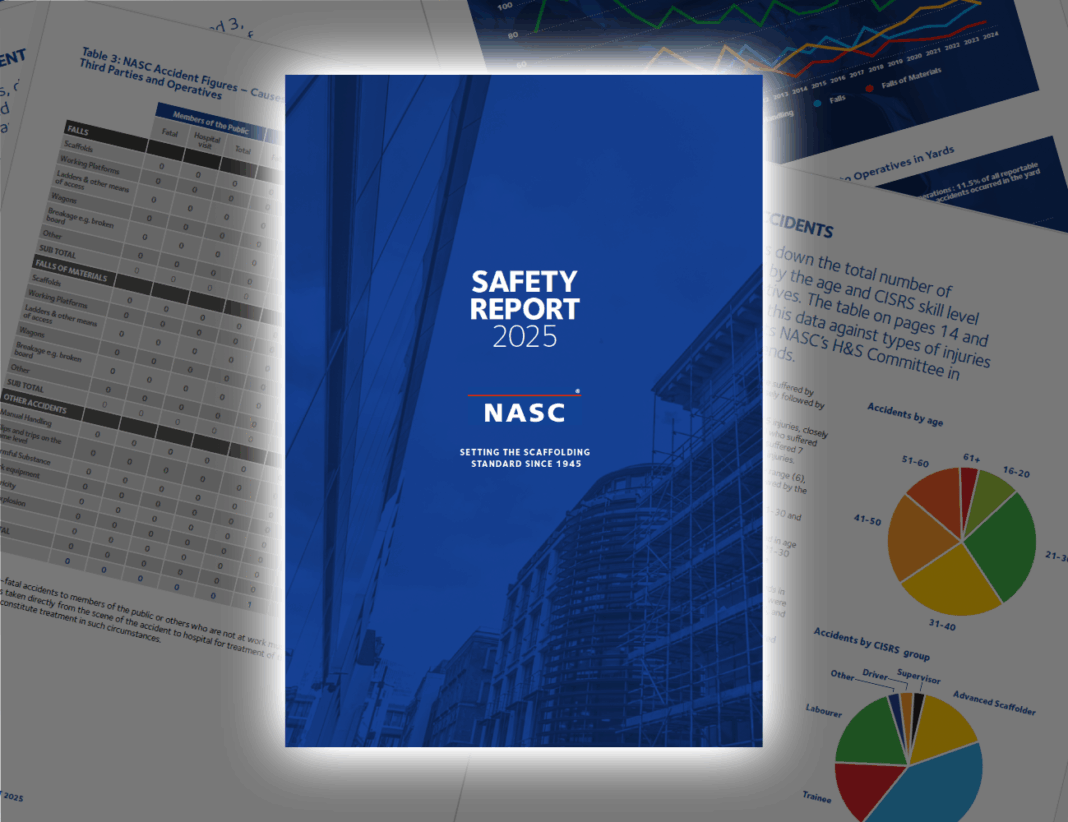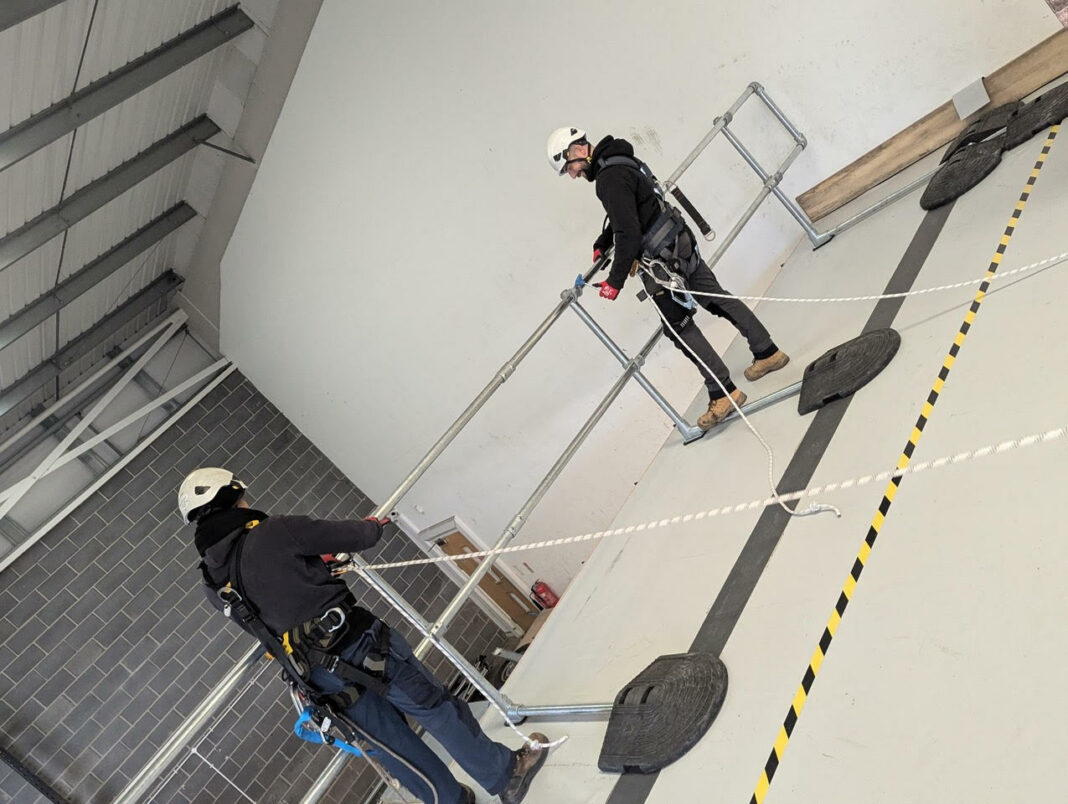The National Access and Scaffolding Confederation (NASC) has released its 2025 Safety Report, revealing the lowest accident rates recorded in the organisation’s 50-year history of data collection.
Despite a significant rise in membership and workforce numbers, accidents across NASC contractor members fell sharply last year — a development hailed by the organisation as a major milestone in scaffolding safety.
According to the report, the Accident Frequency Rate (AFR) for 2024 dropped to just 0.20, while the Accident Incident Rate (AIR) stood at 3.75, both the lowest ever recorded by NASC since it began mandatory reporting in 1975.
Membership also grew by 22% in 2024, with 54 new contractors and an additional 2,775 operatives joining the trade body.
Wayne Connolly, NASC President and Chair of CISRS, described the achievement as “outstanding.”
“This year is one of significant milestones,” he said. “While NASC is proudly celebrating its 80th anniversary, we should also recognise that it is 50 years since we made it compulsory for all contractor members to report RIDDOR accidents on an annual basis. Last year, despite a major increase in the total number of NASC operatives, we saw a decline in the number of reported accidents.”

Chief Executive Clive Dickin praised members for their “safety-first culture.”
“These results aren’t just statistics; they’re proof that high standards and collaboration can save lives,” he said. “But there can be no complacency when it comes to the safety of individuals working at height.”
The report shows that all full contracting members submitted RIDDOR data, underlining what NASC says is a strong culture of transparency and accountability in the sector.
However, the report also acknowledges a tragic incident, the death of an experienced advanced scaffolding inspector. The scaffold had been inspected and handed over prior to the fall, and no witnesses were present. The case remains under investigation.
Digital Tools and Mental Health
The NASC credits its improved safety record partly to wider adoption of technology, including digital tools like TG20 and TG30, which help standardise safe design and site practices.
The confederation has also invested in pocket-sized user guides, safety bulletins, mental health resources, and technical advice lines — all aimed at helping members meet high standards and address both physical and psychological health risks on site.
Members are regularly audited to ensure compliance with current legislation and NASC best practices.
The full report is available online at: nasc.org.uk/information/safety-reports




